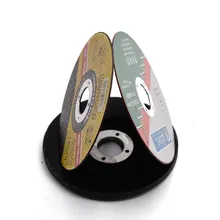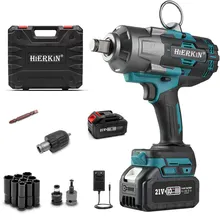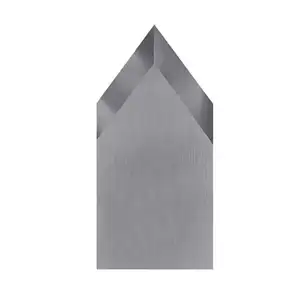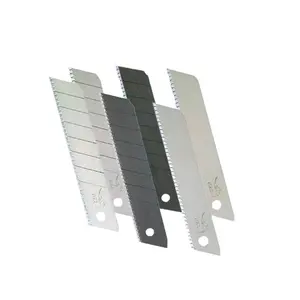Top categories

Pumps & Parts

Tool Storage

Fasteners

Welding & Soldering Supplies

Pneumatic Tools

Hardware

Valves

Abrasives

Garden Tools

Hydraulic Tools

Machining

Tool Parts

Power Tools

Power Tool Accessories

Drill Bits

Hand Tools
About products and suppliers
Utility knife blades are a hand tool that almost every tradesman and enthusiast uses. Utility knives are incredibly versatile hand tools that work well for scraping, scoring, and slicing, among many other tasks. Utility knives are used to cut and trim various building materials, including drywall, felt paper, wallpaper, rope and twine, plastic sheeting, fibreglass insulation, and more. It is the most commonly used tool for cutting drywall to length or breadth in drywalling activities. However, only some utility knives are made equally. The form and size of the blade can vary widely, and understanding these distinctions can aid in selecting the appropriate instrument for the job.
Types of utility knife blades
Utility knives come in various shapes and applications. Utility trapezoidal blades contain a single cutting edge, are trapezoid in shape, and are suitable for cutting various materials. Some blades include a coating on the edge, making them better utilized for cutting tougher materials. A short, straight blade is suitable for situations requiring a shorter, stronger tip on the knife blade, as it locks in better and is more stable. These blades are useful for builders, construction workers, warehouse and logistics personnel, craftspeople, floor and roof installers, industrial machinery, and others.
Hook blade utility knife has hooks at either end and is meant to cut through thick materials without hurting the substance underneath. Hook blades are used in construction, roofing, flooring, and other activities that require cutting strong materials. Hook blades are distinctive in that they feature a hooked form that helps them to cut through materials without snagging or jamming. The hook form also makes it safer for cutting materials in tight locations, preventing the blade from accidentally cutting into underlying materials or surfaces. Utility snap-off blades are typically 90-100mm long and 9 or 18mm wide, designed for use in a particular utility snap-off knife with a retract mechanism.
The snap-off blade utilizes only 10mm at a time. So, utilize one blade section at a time. Leave only around 10 mm of the blade in front. This will prevent damage and produce a cleaner cut. Long utility knife blades are necessary to cut thicker materials, like mineral wool or other insulating material, and are neatly integrated into the utility knife. These are referred to as long blades and don't have a standard. Flooring materials can be cut and scored using concave utility knife blades or a hook utility blade with a single cutting edge used with a utility knife. Concave blades have a distinctive curved, semicircular, or hooked profile. Thanks to its design, this curved knife blade can easily hook and cut through tough or flexible materials, such as carpet and flooring, and around pipes and tight corners.
Materials used in utility knife blades
Carbon steel, stainless steel, tool steel, and alloy steel are the most commonly used materials for utility knife blades. The least common materials used to make blades include ceramic, obsidian, plastic, and alloys of cobalt and titanium. Carbon steel blades are noted for their sharpness and toughness. These blades may keep their cutting edge longer than stainless steel, making them suitable for heavy-duty applications. However, because carbon steel blades are more likely to rust and corrode, they might not be the best choice in moist or muggy environments. Utility knife blade made of stainless steel are perfect for wet or humid conditions because of their increased resistance to rust and corrosion. Stainless steel blades offer better cutting performance and durability than carbon steel blades, although they are less sharp than the latter.
Utility knife blades safety tips
There are various safety precautions to take when using utility knife blades. To begin, refrain from using the box cutters when cutting is difficult; doing so makes the work harder and dangerous. Additionally, utilizing a straight edge to score drywall initially can produce a cleaner cut. Furthermore, when finishing the drywall cut, maintain the drywall folded as far back as possible to maximize the likelihood of a cleaner and straighter back cut.
























 浙公网安备 33010002000092号
浙公网安备 33010002000092号 浙B2-20120091-4
浙B2-20120091-4